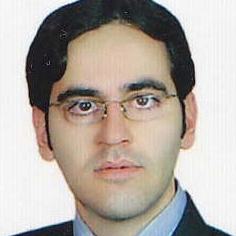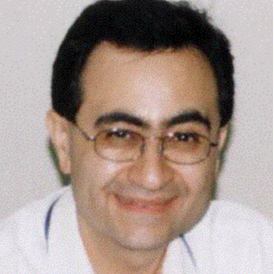International Journal of Intelligent Systems and Applications (IJISA)
IJISA Vol. 5, No. 6, 8 May 2013
Cover page and Table of Contents: PDF (size: 426KB)
Qualitative and Quantitative Evaluation of EEG Signals in Epileptic Seizure Recognition
Full Text (PDF, 426KB), PP.41-46
Views: 0 Downloads: 0
Author(s)
Index Terms
ANFIS, EEG, Hurst Exponent, Lyapunov Exponent
Abstract
A chaos-ANFIS approach is presented for analysis of EEG signals for epileptic seizure recognition. The non-linear dynamics of the original EEGs are quantified in the form of the hurst exponent (H) and largest lyapunov exponent (λ). The process of EEG analysis consists of two phases, namely the qualitative and quantitative analysis. The classification ability of the H and λ measures is tested using ANFIS classifier. This method is evaluated with using a benchmark EEG dataset, and qualitative and quantitative results are presented. Our inter-ictal EEG based diagnostic approach achieves 97.4% accuracy with using 4-fold cross validation. Diagnosis based on ictal data is also tested in ANFIS classifier, reaching 96.9% accuracy. Therefore, our method can be successfully applied to both inter-ictal and ictal data.
Cite This Paper
S. A. Hosseini, M-R. Akbarzadeh-T, M-B. Naghibi-Sistani, "Qualitative and Quantitative Evaluation of EEG Signals in Epileptic Seizure Recognition", International Journal of Intelligent Systems and Applications(IJISA), vol.5, no.6, pp.41-46, 2013. DOI:10.5815/ijisa.2013.06.05
Reference
[1]L. Guo, D. Rivero, J. Dorado, J. R. Rabu˜nal, and A. Pazos, “Automatic epileptic seizure detection in EEGs based on line length feature and artificial neural networks,” Journal of Neuroscience Methods, vol. 191, no. 1, pp. 101-109, 2010.
[2]W. Chaovalitwongse, P. Pardalos, L. D. Iasemidis, D. S. Shiau, and J. C. Sackellares, “Dynamical approaches and multi-quadratic integer programming for seizure prediction,” Optimization methods and Software, vol. 20, no. 2-3, pp. 389-400, 2005.
[3]Y. Kumar, and M. L. Dewal, “Complexity Measures for Normal and Epileptic EEG Signals using ApEn, SampEn and SEN,” International Journal of Computer & Communication Technology (IJCCT), vol. 2, Issue 7, pp. 6-12, 2011.
[4]B. Litt, and K. Lehnertz, “Seizure prediction and the preseizure period,” Current Opinion in Neurology, vol. 15, no. 2, pp. 173-177, 2002.
[5]J. Gotman, “Automatic recognition of epileptic seizures in the EEG,” Electroencephalogr Clin Neurophysiol, vol. 54, pp. 530–540, 1982.
[6]A. M. Murro, D. W. King, J. R. Smith, B. B. Gallagher, H. F. Flanigin, and K. Meador, “Computerized seizure detection of complex partial seizures,” Electroencephalogr Clin Neurophysiol, vol. 79, pp. 330–333, 1991.
[7]V. Srinivasan, C. Eswaran, and N. Sriraam, “Artificial Neural Network Based Epileptic Detection Using Time-Domain and Frequency-Domain Features,” Journal of Medical Systems, vol. 29, no. 6, pp. 647-660, 2005.
[8]V. P. Nigam, and D. Graupe, “A neural-network-based detection of epilepsy,” Neurol Res, vol. 26, no. 1, pp. 55-60, 2004.
[9]A. Subasi, “Application of adaptive neuro-fuzzy inference system for epileptic seizure detection using wavelet feature extraction,” International Journal of Computers in Biology and Medicine, vol. 37, pp. 227–244, 2007.
[10]I. Gu¨ler, and E. D. U¨beyli, “Application of adaptive neuro-fuzzy inference system for detection of electrocardiographic changes in patients with partial epilepsy using feature extraction,” International Journal of Expert Systems with Applications, vol. 27, pp. 323–330, 2004.
[11]P. Y. Ktonas, “Automated spike and sharp wave (SSW) detection,” In: Gevins A.S., & Remond, A., (Ed.), Methods of analysis of brain electrical and magnetic signals, Amsterdam: Elsevier, pp. 211–241, 1987.
[12]A. Tzallas, M. Tsipouras, and D. Fotiadis, “Automatic seizure detection based on time–frequency analysis and artificial neural networks,” Computational Intelligence and Neuroscience, pp. 1-13, 2007.
[13]D. E. Lerner, “Monitoring changing dynamics with correlation integrals: Case study of an epileptic seizure,” Physica D, vol. 97, no. 4, pp. 563-576, 1996.
[14]M. Tito, M. Cabrerizo, M. Ayala, A. Barreto, I. Miller, P. Jayakar, and M. Adjouadi “ Classification of electroencephalographic seizure recordings into ictal and interictal files using correlation sum,” International Journal of Computers in Biology and Medicine, vol. 39, pp. 604-614, 2009.
[15]V. Srinivasan, C. Eswaran, and N. Sriraam, “Approximate Entropy-Based Epileptic EEG Detection Using Artificial Neural Networks,” IEEE Transactions on information Technology in Biomedicine, vol. 11, no. 3, 2007.
[16]N. Kannathal, C. M. Lim, U. Rajendra Acharya, and P. K. Sadasivan, “Entropies for detection of epilepsy in EEG,” International Journal of Computer Methods and Programs in Biomedicine, vol. 80, no. 3, pp. 187–194, 2005.
[17]S. Pravin-Kumar, N. Sriraam, P. G. Benakop, and B. C. Jinaga, “Entropies Based Detection of Epileptic Seizures with Artificial Neural Network Classifiers,” International Journal of Expert systems with application, vol. 37, pp. 3284-3291, 2010.
[18]H. Ocak, “Automatic detection of epileptic seizures in EEG using discrete wavelet transform and approximate entropy,” International Journal of Expert Systems with Applications, vol. 36, pp. 2027–2036, 2009.
[19]D. L. Iasemidis and J. C. Sackellares, “Chaos Theory and Epilepsy,” The NeuroScientist, vol. 2, no. 2, pp. 118-126, 1996.
[20]H. Adeli, S. Ghosh-Dastidar and N. Dadmehr, “A Wavelet-Chaos Methodology for Analysis of EEGs and EEG Subbands to Detect Seizure and Epilepsy,” IEEE Transactions on Biomedical Engineering, vol. 54, no. 2, 2007.
[21]S. Ghosh-Dastidar, H. Adeli, and N. Dadmehr, “Mixed-Band Wavelet-Chaos-Neural Network Methodology for Epilepsy and Epileptic Seizure Detection,” IEEE Transactions on Biomedical Engineering, vol. 54, no. 9, 2007.
[22]R. G. Andrzejak, K. Lehnertz, F. Mormann, C. Rieke, P. David, and C. E. Elger. (2001). Indications of nonlinear deterministic and finite dimensional structures in time series of brain electrical activity: Dependence on recording region and brain state. Physical Review E, vol. 64, Available: http://epileptologie-bonn.de
[23]H. E. Hurst, “Long-term storage of reservoirs: an experimental study,” Transactions of the American society of civil engineers, vol. 116, pp. 770-799, 1951.
[24]J.-S.R., Jang, and C. T. Sun, “Neuro Fuzzy Modeling and Control,” Proceedings of the IEEE Transactions, vol. 83, no. 3, pp. 378-406, 1995.
[25]Jang, J.-S.R., “ANFIS: Adaptive-network-based fuzzy inference system,” IEEE Transactions Systems, Man and Cybernetics, vol. 23, no. 3, pp. 665–685, 1993.


